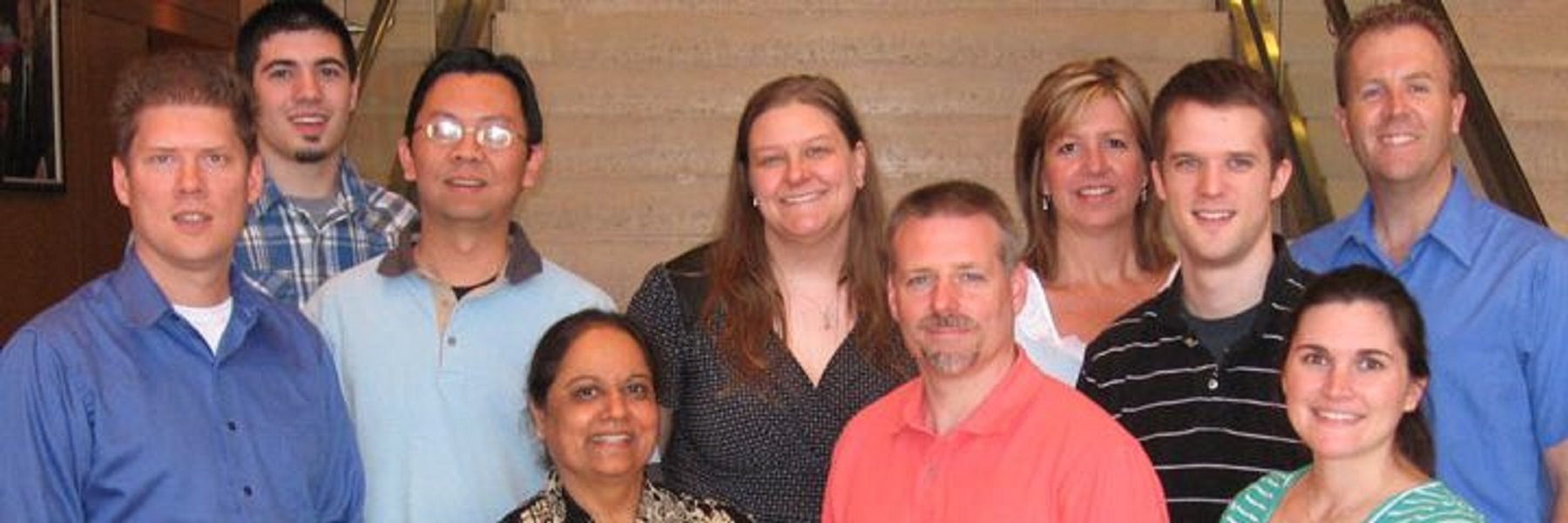Description of the video:
>> [MUSIC] The workshop is typically 6 to 8 students assigned to a peer leader, and they work for two hours. The problem sets that they solve our problems that are written by the faculty member, and the faculty member has lectured on that materials. This is not new material that the peer leader is teaching the students. They are not really teachers, they are facilitators and they are role models for the students. The problems are typically harder than what single students sitting in the dorm room working by themselves can do. You want the problems to be harder than what they can do by themselves. They need their peers to work with. It's group solving problem, the entire group is solving problems not by themselves in the dorm or sitting in the library somewhere. There are things that students come into the class knowing how to do. That's the bottom line. If you construct problems that are close to that, they don't learn too much, they'll keep practicing it, but they're not increasing their knowledge stack much. Then there is this at the top here where the students can do the problems not by themselves, but with a little bit of help. That's where you want the problems to be. The instructor has to know their students and the level at which the student's work, and if the problems are constructed at the top of their zone of proximal development, then the peer leaders help their knowledge advances. The idea is your zone of proximal development increases like that. This is the process that we're trying to duplicate in the workshops where students can argue with each other. They can debate facts. The peer leader is like the adviser in the laboratory. The peer leader, if the students get way off course and they're going completely in the wrong direction, the peer leader knows how to ask the right questions to bring them back to the topic and put them on the right path to the answer. The peer leaders job is not to get the answers, is to help them get to the answer. The knowledge, this is how the knowledge has created. The instructor is not there, that's the key thing here. We train the leaders and then we set them free with the groups. The instructor is not hovering over the groups, and so there is this less intimidating environment where the students can make mistakes and learn from those mistakes. The peer leader has to be trained very carefully to understand these things. What happens is if the peer leader is not trained and they don't know what questions to ask, they give the answer because they feel uncomfortable in this part there in. To get out of that, they'll give the answer. We don't want them to do that. We typically will give them questions if they get stuck here, here are the questions you can ask to get them to move to the next level. The training is a combination of techniques for group work, but also understanding of how people learn. If you think about the chemistry class here, the general chemistry, which is the introductory first year chemistry class. Before they put in PLTL the drop rate, the DWF rates were up to about 45 percent. Since they've been doing this for the last 15, 20 years now, the drop rates, the DFW rates are around 20. It's cut in half and this goes across the demographics. This isn't just for white students or Asian students, it's across for male, female. We've seen success rates get better for all demographics. The peer leader is listening to all the people talk. They have to facilitate and they have to tell the students how to communicate with each other in an environment where they're not sitting there together, and so they can't talk all at once, they take turns. The peer leaders also have control over whose work they can show to the rest of the group, which is a really nice feature. They're solving a problem together and each one is taking a turns. The students in the group are taking turns. They can see what others have done and then talk about it and go on. The students have to be trained on the technology. There's a little more training that goes on in addition to what they traditionally do. The results were very similar. When we looked at their success rates. The way they solve problems, the advantages to the peer leaders, those were very comparable to the face to face environment. Appeared a first time instructor, and you've never done PLTL before, we have a guidebook for the instructors and it covers the theoretical framework for the model. How people learn, talks about how you construct the problems, how you train the peer leaders, and the type of classroom you should have, the group sizes. A lot of information just to get started on our website which is cpltl.indianapolis.iu.edu. We have all the publications about cyber PLTL. We also have publications about 70 peer reviewed publications of PLTL. If someone wants to do cyber PLTL all the information is there. If someone wants to do PLTL, there are plenty of resources there. If you just search PLTL and Google Scholar, you get all the resources there as well, and the names of all the people who've done it.



